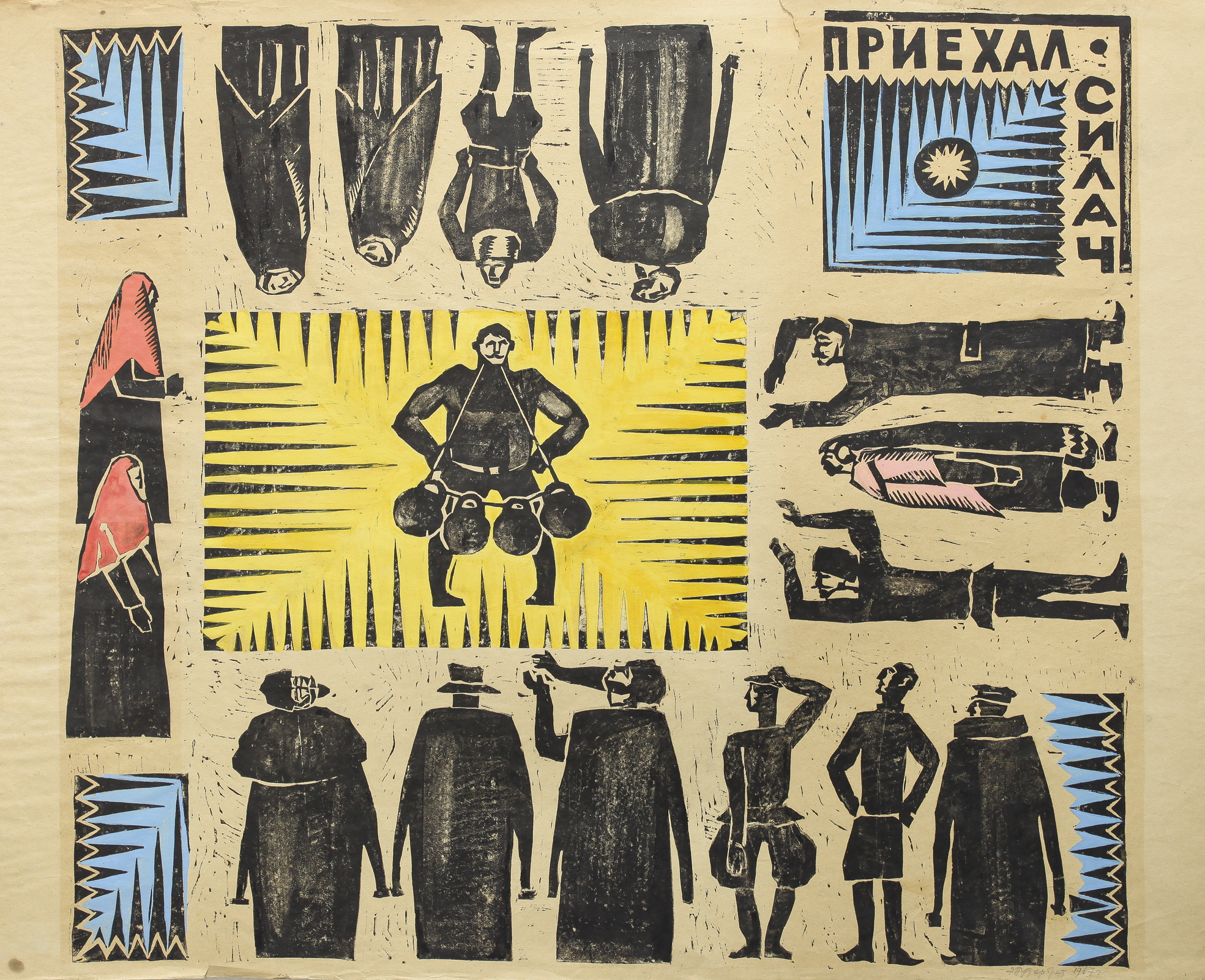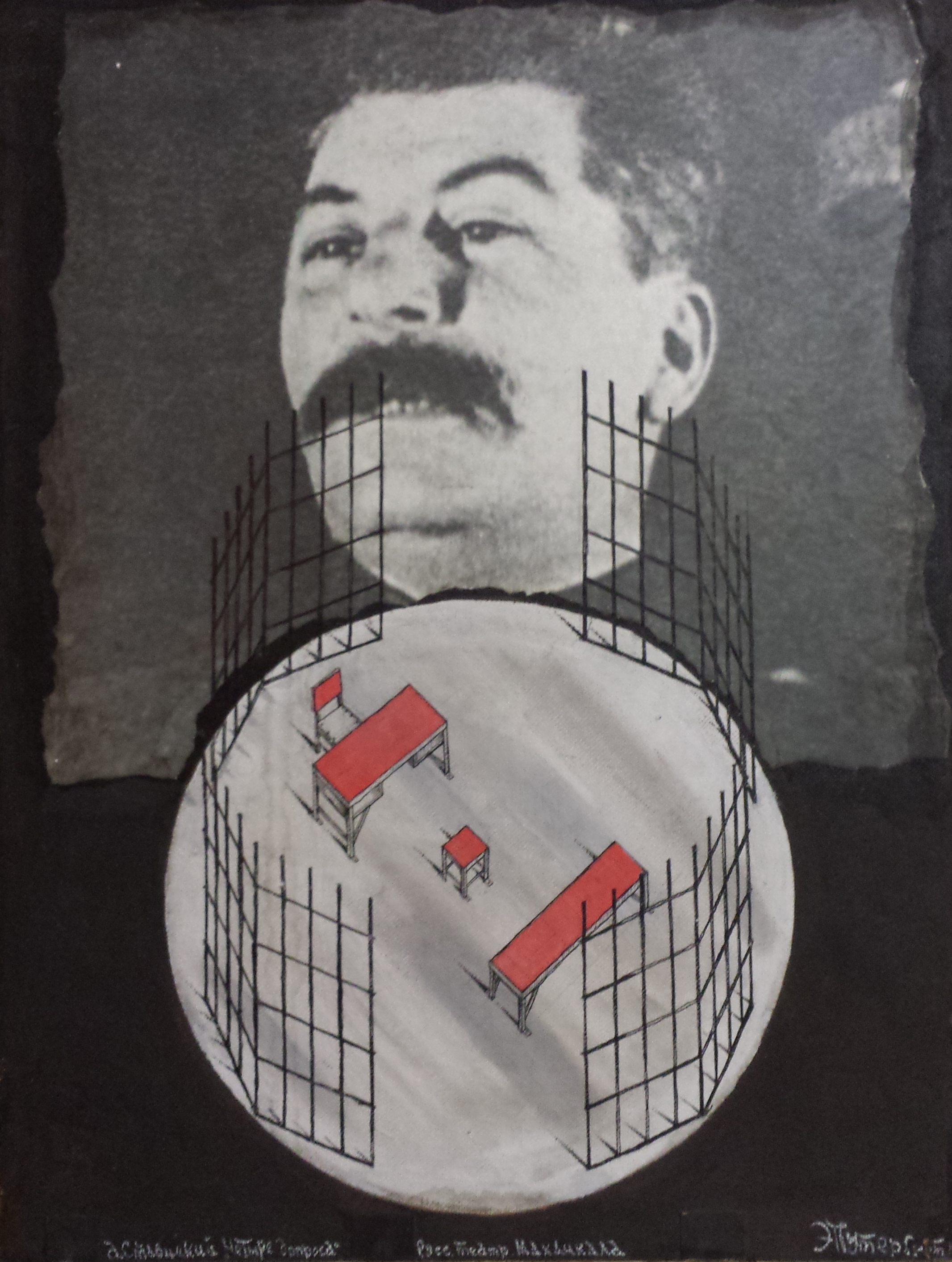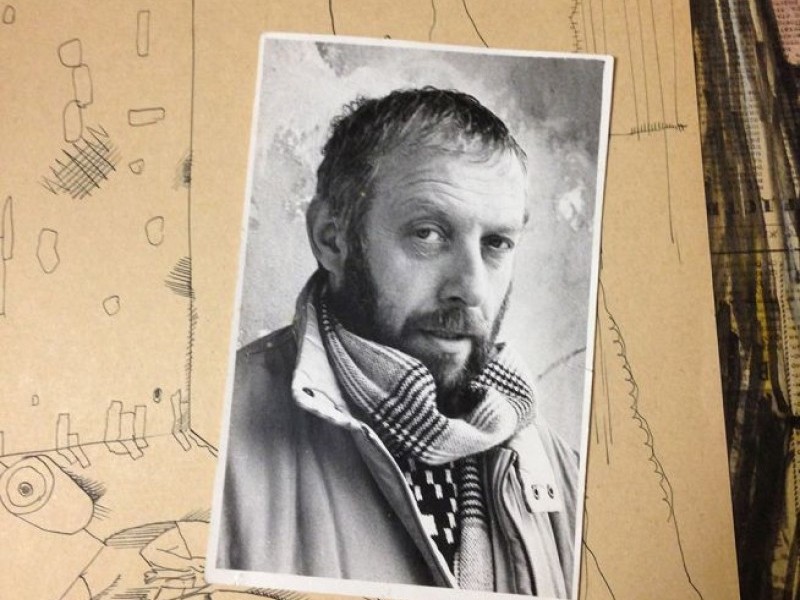
A Strongman Has Arrived, 1967
Eduard Puterbrot
A Strongman Has Arrived, 1967
Linocut print, gouache
60 x 80 cm
Sharjah Art Foundation Collection
search


Eduard Puterbrot
A Strongman Has Arrived, 1967
Linocut print, gouache
60 x 80 cm
Sharjah Art Foundation Collection
Curated by Sharjah Art Foundation Director, Hoor Al Qasimi, Eduard Puterbrot: Between my East and my West, presents a selection of works by the late Dagestani artist, Eduard Puterbrot, tracing the artist’s journey and work spanning two decades. While central to his work are Dagestani folk tales and culture, Puterbrot depicts the balance between East and West and uses various styles and techniques, including theatre and stage design to portray these differences.
Eduard Puterbrot
1988
Mixed media on cardboard
75 x 56 cm
Image courtesy of the Artist


Highly influenced by his home country of Dagestan and its traditions, mythology and culture, Puterbrot’s work encompasses the realm of Dagestani fairy tales, legends and traditions.

This booklet accompanied the exhibition Eduard Puterbrot: Between My East and My West.